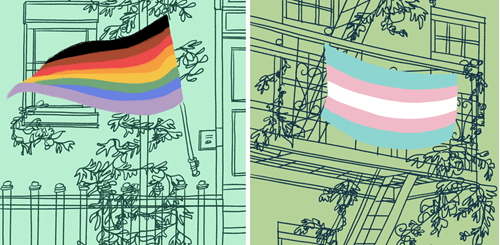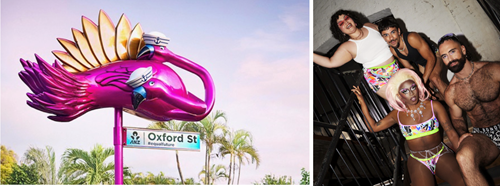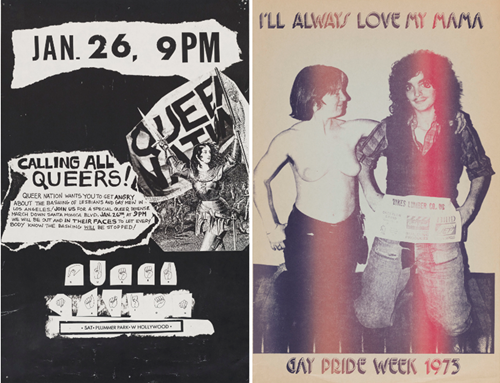
Creating authentic voices and designs that support the LGBTQIA+ community
As Australia hosts WorldPride 2023, brands should reflect on their marketing initiatives aimed at the LGBTQIA+ community.
Over the years, there have been issues with brands engaging in "pridewashing” and "pinkwashing", which can alienate the LGBTQIA+ community, create inauthentic messaging, and do little for queer rights. To avoid these pitfalls, here are three tips for impactful engagement in queer design:
Throughout this article we will reference queer design, also known as queering design, which throughout the art community has recently been used to describe a subset of design that is created by LGBTQIA+ creators, seeks to challenge social norms, and addresses LGBTQIA+ life.
1. Representation – through effort and transparency
To create impactful queer design, brands need to recognize and respect queer struggle and representation by engaging with LGBTQIA+ designers. As queer design can be celebratory, historical, edgy, subversive, light-hearted, camp, moving, dark, and all things at once. However, brands often create disingenuous queer-targeted executions by using queer art without acknowledging queer history or designers. By championing queer experts in the creative process, brands can eliminate audience guardedness and elevate queer voices, ideals, and opinions.
Case Study: Rainbow Logos, queer history, and community representation
In 1978, Gilbert Baker created the rainbow flag as a symbol of unity and celebration for the LGBTQIA+ community. However, brands using the rainbow flag must recognize its history and the need for more flags that represent inclusivity for transgender, bisexual, asexual, queer people of colour, and more. In 2017, the pride flag was updated to include black and brown stripes, emphasizing the importance queer people of colour have had on the foundation and advocacy of pride. To demonstrate authentic representation that aligns with queer values and ideals, brands should ensure their use of the pride flag is respectful and consider exploring broader flag design options to represent all members of the LGBTQIA+ community equally.

On the Left: 2017 rainbow flag by activist group More Colour More Pride. On the Right: Transgender flag by Monica Helms in 1999.
Credit: Kasandra Brabaw, in ‘A complete guide to all the LGBTQIA+ flags & what they mean’.
2. Personality – through homage and parody.
Queer design draws heavily from homage and parody, a concept epitomized in the art of drag. Drag is subversive and exaggerated, taking the performance of gender to its extremes. Drag can be a joke, compliment, reference, politicized subversion, or celebration all at once. For example, the typeface lockups created by Studio Moross for season 13 of Rupaul's Drag Race meet the queens, were based on each drag queen's name, personality, personal style, and story. Gottmik's typeface was designed to capture their edgier persona, whilst Elliott with 2 T's' lockup leaned into their Las Vegas roots. This artistic pull-and-tug between homage and parody perfectly personifies a core element of queer graphic design art. Which also seeks to integrate personality with design in contrasting and emotive ways.
Case Study: Emotive and impactful brand campaigns
Personality, homage, and parody are key elements that should be reflected in a brands design, as they create a powerful emotional connection to the audience. ANZ's 'Signs of Love' was a Grand Prix (Design / Outdoor) winning campaign that sought to raise awareness of LGBTQIA+ community sentiments about feeling unsafe in Australia. It combined personality through homage by engaging with place, site and heritage to make an impactful statement – which was grounded in insight. Bonds 'Proud to be me' creative design leaned into self-expression, balancing designer Kris Andrew Smalls childhood memories and a homage to queer culture. As queer audiences look for these connections to self-expression and personality, brands need to adopt these key learnings to create impactful campaigns for their audiences.

On the Left: ANZ’s Sailor Flamingos, Rockhampton, QLD.
Pictured on the Right: Louis Libran (he/him), Mia “Minky” Dennis (she/they), Amyl (he/they), Kiah (he/they). Credit: Bonds Australia 2023 Pride Campaign.
3. Acknowledging hardship, disparity, and systemic struggle
Queer design has roots in political movements and public health initiatives due to the historic struggle for equal rights and medical neglect and abuse. Queer design often references these struggles in its subject matter and visual appearance. For example, during the second world war in Germany, the pink triangle was used as an identifier to criminalize homosexuality, since then the triangle has been reclaimed by the modern queer liberation movement. Acknowledging the political messages of gay life and its struggles is a core of queer design, and brands should champion these messages and causes to contribute authentically to the conversation.
Case study: Poster design, typeface, and LGBTQIA+ struggle
Days of Rage curated an exhibition of queer activist-based graphic design, showcasing posters, signage, and print material used in pride moments, demonstrations, and health initiatives. The posters have a darker, edgier, and more guerrilla style of queer design using traditional and cheaper printing processes. These nonconventional approaches reflect the LGBTQIA+ communities' nonconformist sentiments, while the mass-production design techniques reflect the urgency for survival. Type is championed in these posters, often having a brutalist focus on the page. These creations represent the political roots of queer design, reflecting the struggle for equal rights and recognition.

On the Left: Kate Sorensen’s ‘Calling All Queers!’ 1991 activist poster. On the Right: Creator unknown, titled ‘I’ll always love my Mama’, created in 1973. Credit: Days of Rage Archive.
Ultimately, brands that want to engage in queer design should be intentional, transparent, and authentic. By recognizing the importance of representation, personality, and acknowledging hardship and disparity, brands can create impactful campaigns that resonate with their LGBTQIA+ audiences.
Authors
Alvin Zhong - Designer and Matthew Orellana - Junior Brand Strategist
Aren’t sure where to start? Send us a message at [email protected] and let’s have a chat about how we can help.

